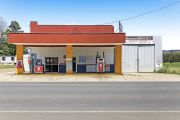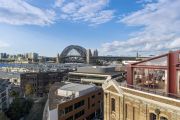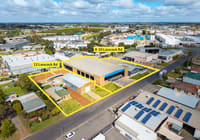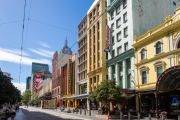
US tariffs turn Australia into commercial property haven
Australia’s commercial property market is benefiting from the fallout of US President Donald Trump’s trade wars, attracting renewed interest from foreign capital and getting an additional boost from local interest rate cuts, new CBRE data shows.
Commercial real estate sales totalled $15.5 billion across office, industrial, retail, hotel and living assets in the six months to June, representing a 13 per cent year-on-year increase.

Underscoring the appeal of Australia’s property market, US Federal Reserve chairman Jerome Powell this week reiterated his point that the central bank probably would have cut rates further this year but for concerns that inflation could rise as a result of Trump’s expanded use of tariffs.
Those concerns are weighing on investment sentiment across much of the Asia-Pacific, making Australia appear a relatively safe harbour and an increasingly attractive destination for global investors seeking stability and returns amid the uncertainty.
CBRE’s Pacific capital markets head Flint Davidson said falling interest rates locally had enhanced the appeal of local commercial real estate, especially when compared to jurisdictions grappling with prolonged inflation due to trade barriers.
“Australia has been shielded from any major impact of tariffs placing it as one of the safest investment destinations in APAC,” Davidson said.
Australia’s resilience to trade-related shocks, combined with favourable macroeconomic conditions – such as strong infrastructure investment, employment growth and robust population growth – supported commercial property demand, he said.

The industrial sector led the growth, with transaction volumes surging 98 per cent year-on-year to $5.4 billion, fuelled by several large portfolio deals. Retail assets also recorded a solid performance, with $4.7 billion in deals – up 29 per cent – reflecting renewed investor interest following a reset in rents.
In contrast, the office sector registered an 11 per cent decline in transaction volume to $3.8 billion. Davidson attributed the fall to the gap in pricing expectations between sellers and prospective buyers.
Recent deals include Odakyu Electric Railway Co buying a stake in Salesforce Tower, Sydney’s tallest office building, in the latest example of foreign companies returning as major players in Australia’s property market.
In retail property, US private equity giant Blackstone is set to offload Top Ryde City in Sydney’s northwest suburbs for more than $500 million to funds house IP Generation, which is working with its new owner MA Financial to raise a fresh fund to hold the asset.
“In office, increased pricing expectations off the back of sound rental growth has created a pricing mismatch, which has reduced volumes,” Davidson said.
“The improved outlook also means office owners in Sydney especially want to hold on to those assets, and would rather let go of assets elsewhere if they need liquidity.”
Property is increasingly viewed as a defensive asset class amid macroeconomic uncertainty. Lease-backed income streams provide stable cash flow, making commercial real estate attractive for investors seeking predictable returns in a volatile global environment.
The Reserve Bank of Australia’s two rate cuts earlier this year have added to the momentum, with markets widely expecting further monetary easing. Lower borrowing costs typically improve property yields and valuations, bolstering investor sentiment.
However, not all analysts are convinced the upswing will be sustained. Capital Economics remains cautious, arguing the implications of US trade policy will nevertheless reverberate into the Asia Pacific market.
Capital Economics chief commercial real estate economist Kiran Raichura said delays in the expected investment recovery had been exacerbated by the continued unpredictability of US tariffs.
“While the effect of tariffs will be felt across Asia-Pacific as export growth in most markets is likely to slow, the impact on economic growth will be different across markets,” Raichura said.
He also noted that despite signs of easing bond yields, the underlying rate environment could remain restrictive.
“Admittedly, benchmark 10-year government bond yields have eased from recent peaks as markets have begun to price-in interest rate cuts. But we think inflation will be stickier,” he said.
Even with trade tensions and global volatility clouding the outlook, CBRE maintains a bullish stance on the Australian commercial property market, pointing to the country’s relative economic stability, population growth and infrastructure pipeline as long-term support pillars.
“Interest rates help in terms of boosting returns, so that’s a driver of why buyer sentiment has slightly improved over the last six months,” CBRE’s capital markets research head Tom Broderick said.
“I also think like maybe we’re less impacted by tariffs as well, unlike other parts of Asia-Pacific that are more impacted by this volatility in terms of tariffs, whereas we’ve probably been a little bit more shielded as well.”











